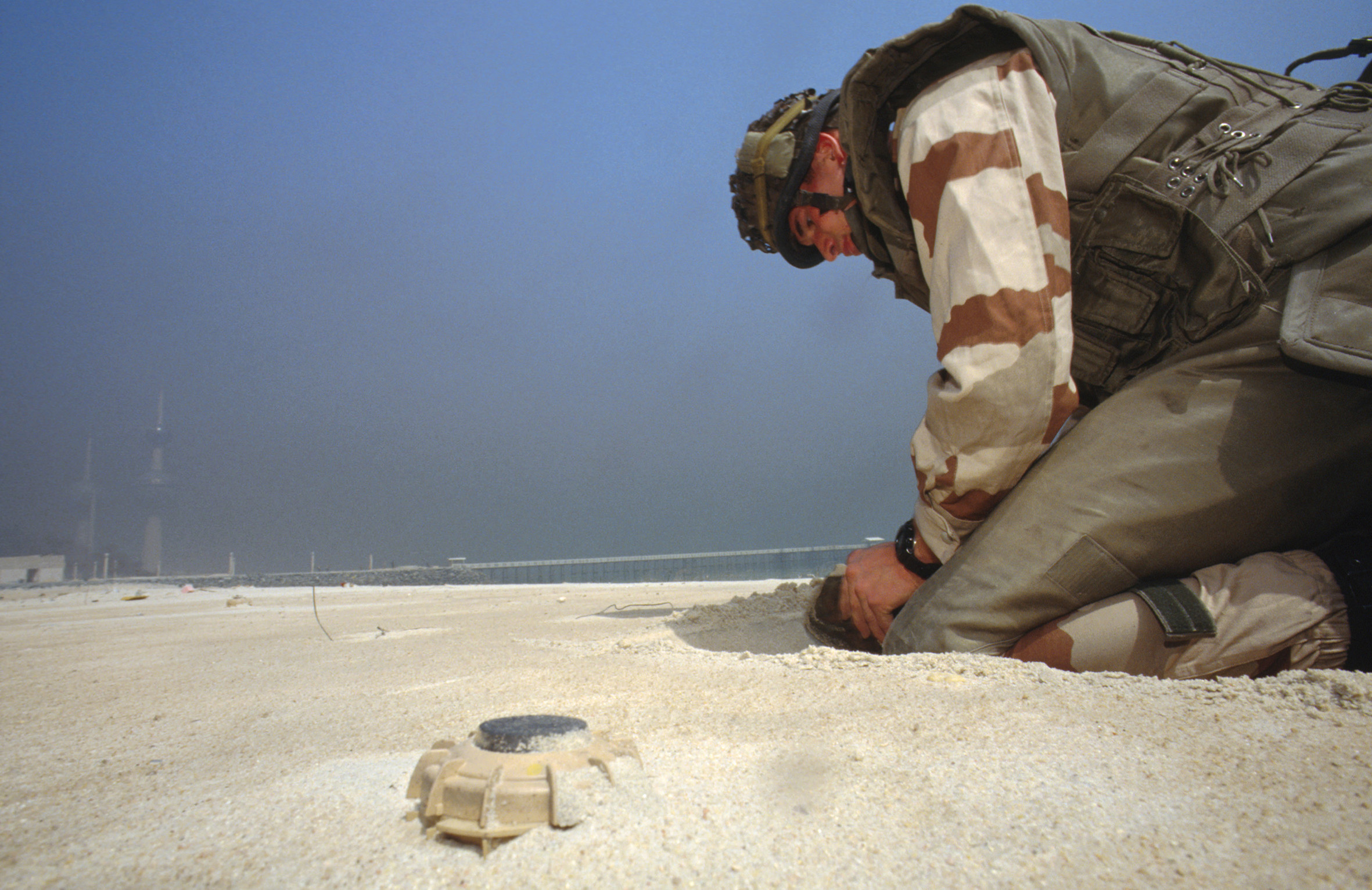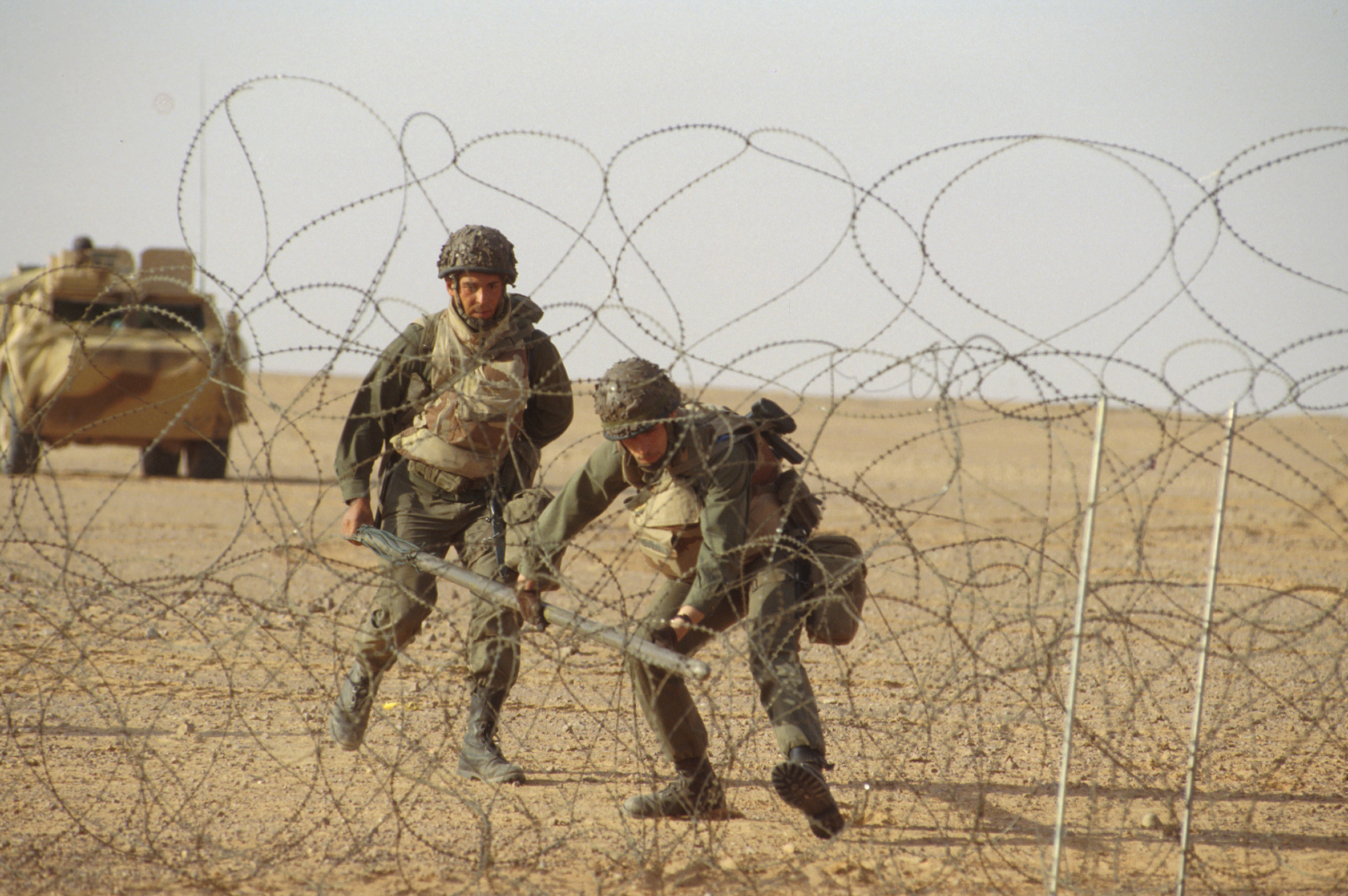The Gulf War: A Break for the Engineers
The Engineers took part in the Daguet operation led by France within the framework of the international coalition. The 6th Foreign Engineer Regiment (REG) was fully deployed under the command of Colonel Jacques Manet and was given an assault engineer mission. The division's resources were also reinforced by detachments of sappers from all units in France. The allies were then waging a conventional war against a Soviet-type army. For the sappers of the Cold War, it was a time of learning about fire and the offensive.
A young regiment engaged in combat
The Legion Engineer Regiment was engaged between September 1990 and May 1991. Recently created, it was not yet experienced. General (2S) Jacques Manet recalls: " When the Gulf War broke out, the regiment was very young, only six years since its creation in 1984. Until 1990, the 6th Regiment had built its experience [around] mainly peacetime de-mining. The priority was therefore to learn combat missions, what we call assault engineering. During the first phase of the operation (September to December 1990), the regiment was involved in the deployment of the Daguet division's elements, in their protection (merlons around life zones, ammunition bunkers, combat sites...) but also in their installation in the field (construction of cesspools for the evacuation of waste water). In the second phase of the operation, synonymous with the preparation of an offensive against Iraq, the 6th REG was regrouped in Saudi Arabia. It perfected its training, integrating the constraint of combat in NBC suits and preparing to carry out assault engineering missions in favour of the coalition's armoured elements with the equipment provided: bangalores (elongated charges), various explosives, flame throwers, etc.
As the regiment had no offensive mechanised mine-clearing capability, it was reinforced by an armoured engineer company (EBG) of the3rd RG, a heavy mine-clearing platoon composed of volunteers from other regiments, and by the 27th American Parachute Engineer Battalion equipped with the Mines Clearing Line Charge (MICLIC) system, which allows for quick breaches in minefields. As mine-clearing tanks, the French engineers modified 6 AMX 30 remote-controlled tanks, which were equipped with mine rollers of Israeli origin (KMT5). The operational preparation integrating these new equipments is very fast: " We managed to learn these equipments by creating ourselves minefields in the exercise areas (...) to practise opening routes with the MICLICs, mine-clearing tanks and EBGs," Jacques Manet recalls. On the eve of the offensive, the Daguet division had about 1,200 engineers, including two staffs, 9 elementary units, 7 of which were combat or works units. The 6th Regimental Regimental Commander was directly in charge of the whole unit, along with the detached American battalion.
Feedback from the engineers
In his report at the end of the mission, Colonel Jacques Manet presented the lessons learned by the engineers during the offensive. The offensive was characterised by a very sustained pace of operations, with the French covering 120 kilometres in two days. The requirements were numerous: difficulties in reorganising during the action, setting up a "terrain management" cell, and engineer reconnaissance resources (Engineer Liaison and Reconnaissance Detachment, DLRG). These elements must then allow for the anticipation of the manoeuvre. At the joint and combined forces level, the problems of transmission and interoperability are complex. Moreover, the logistical axes - important for the manoeuvre - could only be achieved thanks to the equipment held by the Americans. The Engineers had to urgently develop heavy works units capable of intervening rapidly in the combat zone. Finally, the clearance of submunitions from the battlefield became a major mission of the engineers in operations. The issue of mass destruction of ammunition and the enemy's military potential became important.
The Gulf War brought to light some of the difficulties faced by the Engineers, in particular the lack of rapid demining means. The MICLIC proved to be rustic, easy to tow but with a limited practical demining range. The AMX 30 deminer was satisfactory, even if it appears that the addition of a bow blade at the front is indispensable. For the Engineers, the combat experience in the Gulf thus reveals many challenges for the future.
Abbreviations
DLRG: Detachment of Liaison and Reconnaissance Engineers
EBG: Armoured Engineer Vehicle
MICLIC: Mines Clearing Line Charge
NBC: Nuclear, bacteriological and chemical
REG: Foreign Engineer Regiment
RG: Engineer Regiment







